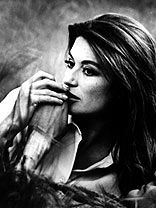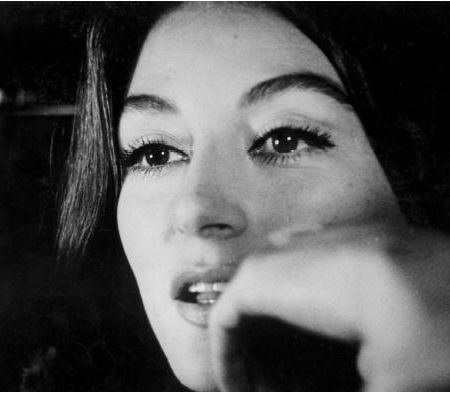 | A sultry, enigmatic leading lady of several classic European films of the 1950s and 60s, Aimee, the daughter of a French theatrical family, studied acting and dancing in her native France and England before making her film debut at age 14 in "La Maison sous la mer" (1946). She first gained notice in a Juliet-like role in Andre Cayatte's "Les Amants de Verone/The Lovers of Verona" (1948) and a string of starring roles followed in which she worked in Italy, Britain and West Germany as well as France. |
Aimee made her Hollywood debut as a freedom fighter in Anatole Litvak's political romance "The Journey" (1959), but it was her nymphomaniac rich girl in Federico Fellini's triumph "La Dolce Vita" (1960) and her long-suffering wife in his even better "8 1/2" (1963) which established her as a formidable screen talent. Her work as the sexually ambivalent queen in Robert Aldrich's "Sodom and Gomorrah" (1962) was also a milestone of her over 50 films.
Though Aimee has never achieved the enduring international popularity of her contemporaries Brigitte Bardot and Catherine Deneuve, she has worked steadily throughout her career and has remained a strong presence in European-based productions. Director Jacques Demy provided Aimee with two important roles: that of an enchanting cabaret dancer and single mother in "Lola" (1961) and as an abandoned fashion model in "The Model Shop" (1969), which was filmed entirely in LA. It was, however, Claude Lelouch's wildly romantic drama "A Man and A Woman" (1966), with Aimee as a widow who falls in love with widower Jean-Louis Trintignant, that brought her firmly into the international limelight. She received an Academy Award nomination and the film went on to win Best Foreign Film and Best Original Screenplay. Even so, none of the three subsequent US-backed films she made did well financially, including the promising casting of Aimee in the title role of George Cukor's "Justine" (1969), based on the famous Lawrence Durrell novels "The Alexandria Quartet" about French expatriates in North Africa.

Aimee continued making European films during the 70s and 80s, even taking Best Actress honors at the Cannes Film Festival for her role in "Le Saut dans le vide" (1980). She never, though, duplicated the worldwide visibility she had garnered in "A Man and a Woman", even when she recreated her acclaimed role in Lelouch's sequel "A Man and A Woman: 20 Years Later" (1986). Aimee later made a welcome appearance as a designer in Robert Altman's take on the Parisian fashion scene, "Ready To Wear (Pret-a-Porter)" (1994).

































